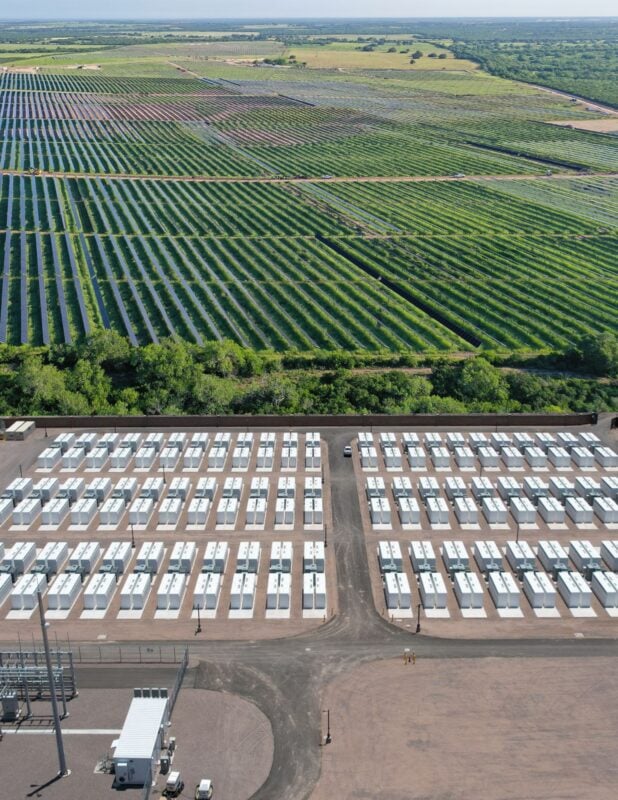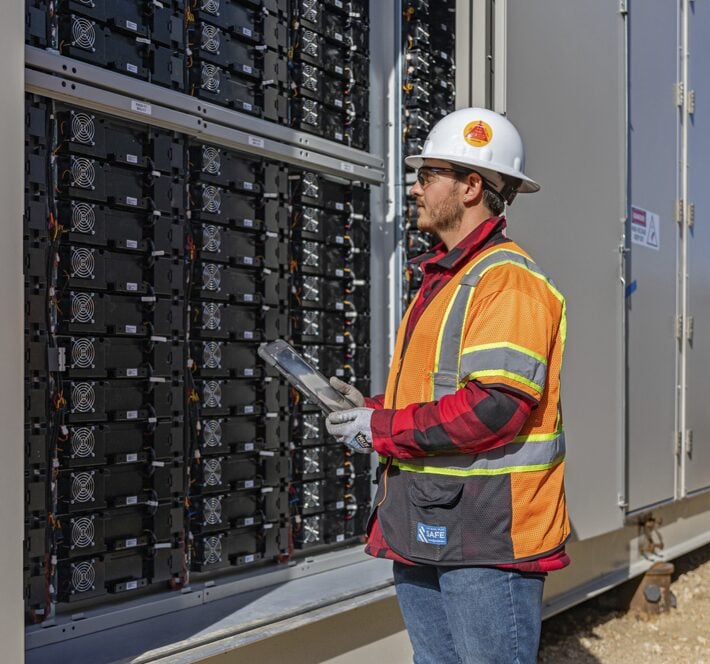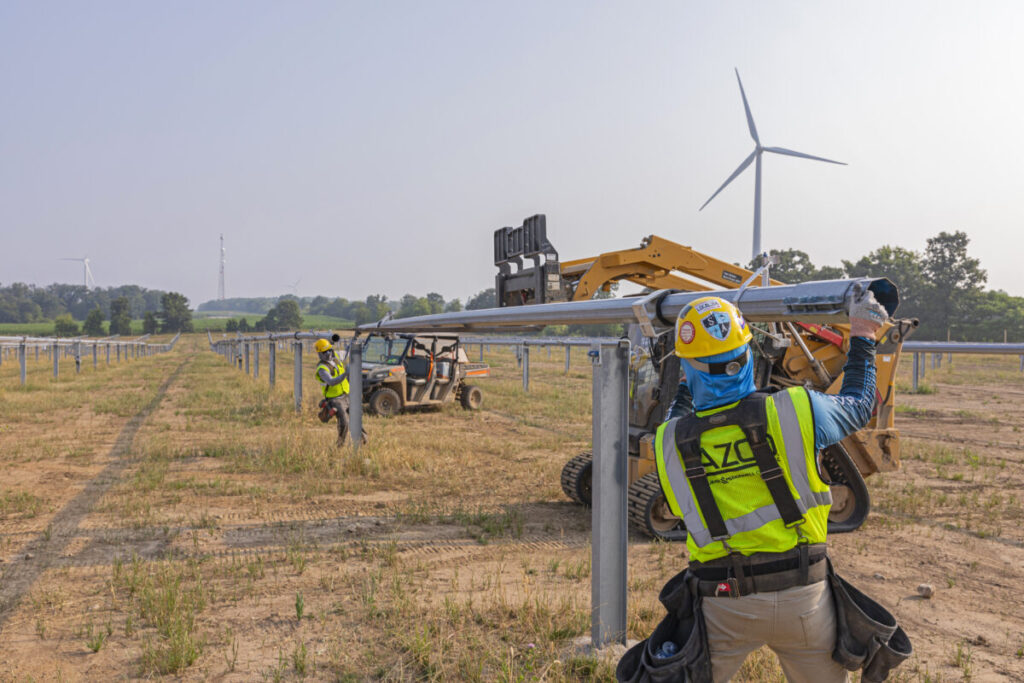
Integrating battery energy storage systems (BESS) with solar projects is continuing to be a key strategy for strengthening grid resilience and optimising power dispatch.
With proper planning, power producers can facilitate seamless storage integration to enhance efficiency. Considering space, electrical infrastructure and control systems early in a solar project’s design phase allows sites to remain adaptable as the grid landscape evolves.
Try Premium for just $1
- Full premium access for the first month at only $1
- Converts to an annual rate after 30 days unless cancelled
- Cancel anytime during the trial period
Premium Benefits
- Expert industry analysis and interviews
- Digital access to PV Tech Power journal
- Exclusive event discounts
Or get the full Premium subscription right away
Or continue reading this article for free
The growing adoption of battery storage alongside solar is driven by the ability to use the same interconnect and substation, making permitting and interconnection more efficient. Solar generation is inherently intermittent, but adding storage adds flexibility to the project, stabilises power output and helps meet demand during peak periods. Recognising the economic and operational advantages, many developers and power producers are opting to co-locate solar and storage assets.
Planning for future storage integration during solar construction
Generally, the quickest path to add storage to a solar project is under the same interconnection. A well-planned project allows storage to be incorporated within the existing PV interconnection, streamlining the regulatory approval process and saving time. However, projects must account for strategic considerations.
Yes, storage can be added later, but space and logistics are often overlooked when designing and building solar sites. In addition to allocating strategic space for the BESS, projects must account for substation expansion, constructability of BESS (e.g., equipment delivery logistics, laydown space and crane placement), future fire protection requirements and proper routing of medium-voltage AC cables from the BESS area into the substation. Attention to detail during the site’s design and construction phases is necessary to minimise future BESS AC crossings and conflicts with the solar AC collection system to avoid costly infrastructure modifications. Solar projects also should be planned with key factors in mind, from the interconnection strategy to considerations with the control systems.
One important interconnection strategy is understanding how a project’s point of interconnection (POI) capacity affects the substation design. For example, consider a 100MW solar facility with a 100MW POI capacity: if a 25-MW battery storage system is added without exceeding the POI limit, the substation’s original ratings remain sufficient, as the total output never surpasses 100MW. This is a supplemental storage approach, where energy is stored and dispatched strategically without increasing the overall system capacity. However, if the goal is to expand total capacity beyond the original POI limit — such as increasing output to 125MW— then the substation must be designed at the outset to accommodate the higher power rating. Planning for this upfront prevents costly substation modifications and allows for a more seamless expansion in the future.
Compared to solar, BESS control systems generate significantly more data points, which means having advanced power plant controllers (PPCs) and historian systems to manage significant amounts of data to implement charge and discharge cycles, state-of-charge balancing and real-time grid responses. In the example of adding 25MW of storage to a 100MW solar facility without exceeding the POI limit, a control system would be required to manage both assets to prevent substation equipment from overloading and to maintain compliance with POI capacity.

Another critical area of overlap between solar and BESS portions of a project is related to short circuit, reactive power, capacitor bank sizing (if necessary) and harmonics. The short-circuit contribution from inverters may be minimal but should not be overlooked. It should be studied to assess how PV and storage systems impact the overall design, especially as the number of power conversion systems (PCS) increases on-site. Understanding the use case for BESS and whether it will be a supplemental interconnection or provide increased interconnection capacity will determine the variety of scenarios that should be modelled and evaluated in the reactive power and harmonics studies.
Critical design factors include AC cable routing, control system capacity, short-circuit studies, use-case analysis, reactive power and harmonics modelling, and physical space. Without proper planning, retrofits can become costly, requiring substation modifications, additional control system hardware and rerouted cable infrastructure. Below are some design considerations:
- Adding dedicated breakers for storage rather than sharing existing solar breakers.
- Including proper conduit stub-ups and separation between solar and storage for MVAC cable routes.
- Conducting modelling and analysis of both systems to determine proper equipment ratings at the onset.
- Understanding the BESS use case and interconnection plans to determine reactive power and harmonics design and impacts.
- Planning for fire protection and compliance at battery storage facilities should include emergency access, firewater supply and adherence to local codes, standards and regulations. This may require hazard mitigation analysis (HMA), failure mode effect analysis (FMEA) and environmental impact studies — often necessitating coordination with the authority having jurisdiction (AHJ).
An integrated team approach
A fully integrated engineer-procure-construct (EPC) approach streamlines project execution by aligning solar, storage and transmission and distribution (T&D) scopes seamlessly under a single team. An integrated team provides greater opportunities for a successful project.

One of the greatest project risks is the interface points (or seam points) between different entities. By consolidating all aspects of the project under an integrated team, interface points are eliminated and efficiencies are gained by avoiding duplication in system design. This approach unifies civil, structural and electrical designs across the facility, enabling efficient coordination, communication and comprehensive constructability planning.
Future-proofing strategies and industry outlook
Scalability remains a priority. Power producers should consider augmentation planning to allow for an easy transition to solar-plus-storage. As demand for higher data processing increases, it will be critical to account for data and control system integration and continually engage in regulatory and permitting requirements with local authorities to stay compliant.
Long-term adaptability is essential. By incorporating early-stage planning, robust electrical design and an integrated EPC approach, projects can be built for expansion, keeping tomorrow in mind while maximising energy reliability and grid efficiency today.
Grant Reasor is manager of solar preconstruction at Burns & McDonnell, Joshua Tucker is engineering director of energy storage at Burns & McDonnell and Dan Rollins is lead controls engineer of energy storage at Burns & McDonnell.






